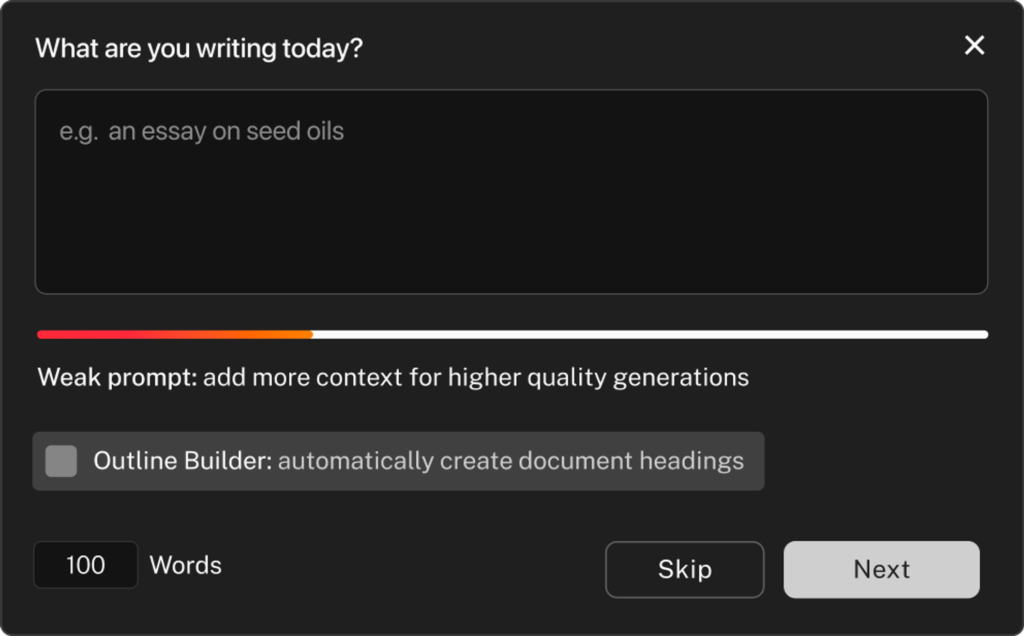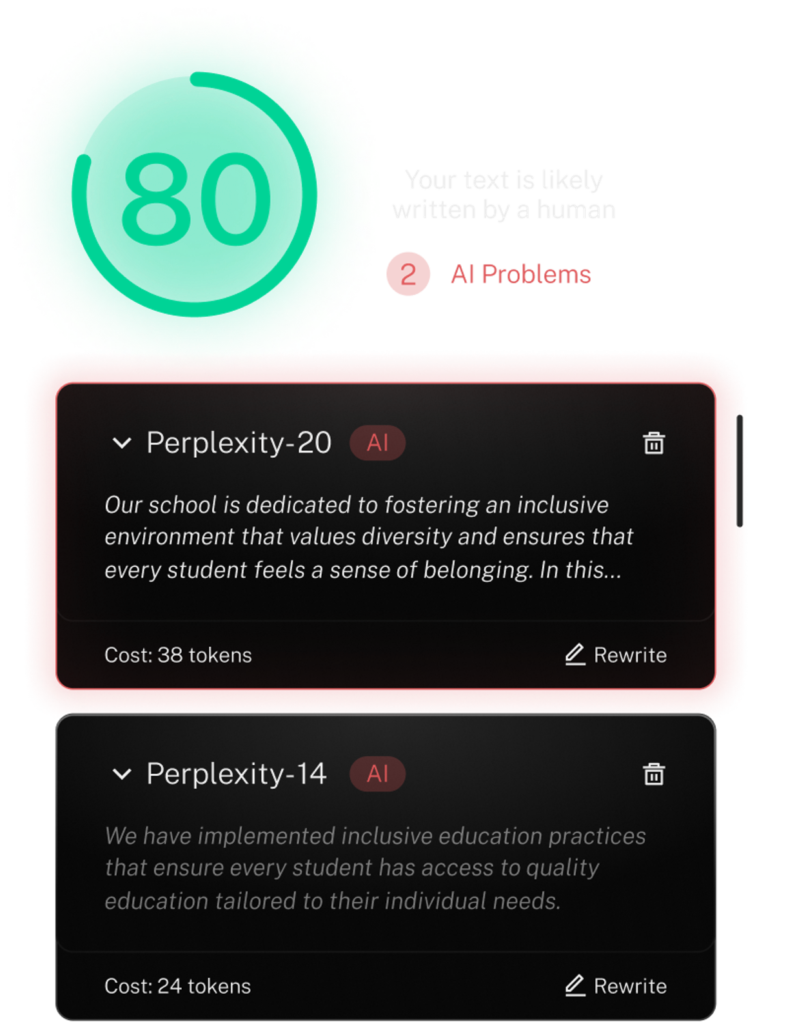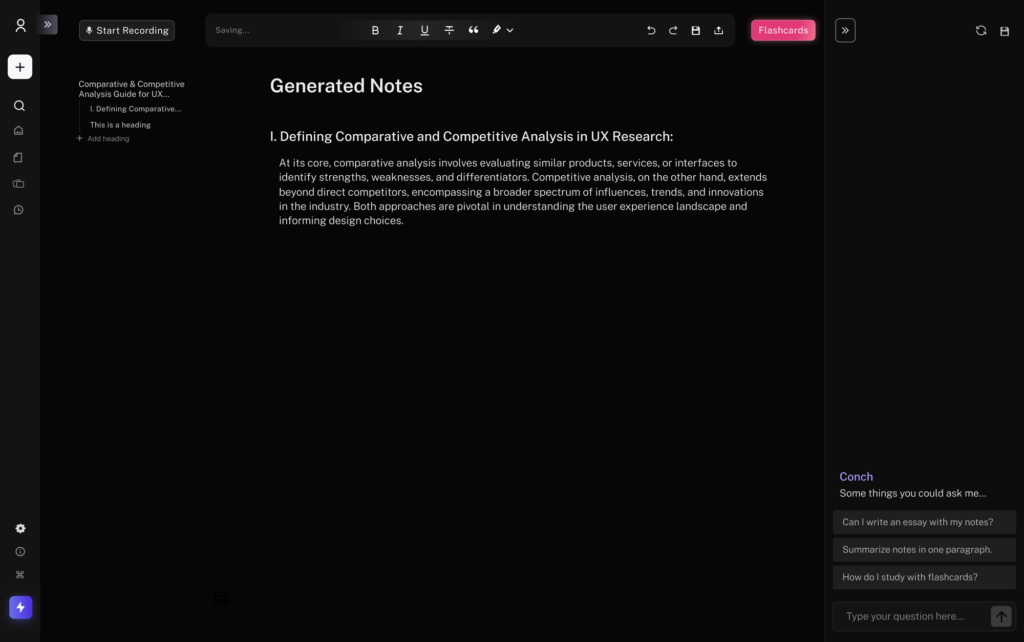
Artificial intelligence has undoubtedly revolutionized the way we live, work, and interact with technology. From voice assistants like Siri and Alexa to chatbots that assist us in customer service, AI has become an integral part of our daily lives.
But while AI has made significant strides in mimicking human behavior, there is still one area where it falls short: humanizing AI text. How can we bridge the gap and create a more natural and engaging experience?
Imagine receiving a text message that not only feels like it was written by a real person but also captures the unique nuances and emotions that make us human. Enter the world of humanizing AI text, a cutting-edge field that aims to make conversations with machines feel as natural as those with our fellow humans.
From personal assistants that understand and respond to our feelings to chatbots that can engage in meaningful conversations, researchers and developers are tirelessly working towards creating AI systems that are indistinguishable from humans in their text interactions.
In this blog, we’ll explore the fascinating techniques and technologies that power this humanization process and discover how undetectable AI is transforming our digital experiences. We will also delve into Conch AI, an advanced AI writing assistant tool, or ‘alat’, that offers features like rewriting, summarizing, content generation, simplification, paraphrasing, and AI detection bypass. Conch AI’s synergy with multiple languages and its ability to improve existing work, detect Excel files, and generate original content make it a remarkable tool in the field of humanizing AI text. Get ready to dive into the exciting world of humanizing AI text and unravel the secrets behind this remarkable advancement that will shape the future of technology.
Humanize AI Text? What’s that?
Humanizing AI text involves making AI-generated text sound as if it were written by a human. This process is essential as AI technology continues to progress, aiming to create more coherent and engaging human-like text. The goal is to enhance user experiences, facilitate better communication, and foster trust between humans and AI systems.
Techniques for Humanizing AI Text
To effectively humanize AI text and enhance penulisan, several techniques can be employed:
Natural Language Processing (NLP) Algorithms:
Utilize NLP algorithms to analyze and replicate human speech patterns, grammar, and syntax, highlighting the fitur of Conch AI such as rewriting, summarizing, generating content, autocomplete, paraphrasing, and AI detection bypass. This enables AI to generate text that closely resembles human communication.
Training on Human-Written Text:
Train AI models on extensive datasets of human-authored text. Exposure to diverse language examples helps AI mimic human writing styles, vocabulary, and tone, resulting in more organic and relatable text.
Injecting Personality and Emotion:
Humanizing AI text goes beyond linguistics. It involves infusing personality and emotion into the content, which can be effectively achieved using asisten penulisan, or AI writing assistants. This can be achieved by programming specific personality traits into the AI or developing models capable of understanding and expressing emotions. These elements enhance engagement and empathy in interactions, ultimately improving the user experience.
Practical Applications of Humanized AI Text
Humanized AI text finds practical applications across various industries. In customer service, AI-powered chatbots can use humanized text to provide personalized and helpful responses to customer inquiries.
In content generation, AI can write articles, blog posts, or social media captions that sound as if they were created by a human writer. These AI tools can efficiently handle various types of written content, including artikel, enhancing the accuracy and efficiency of tasks like modification, summarization, and citation generation. This not only saves time and resources but also maintains the quality and authenticity of the content.
Ethical Considerations
It’s essential to recognize that humanizing AI text raises ethical concerns. The potential for AI-generated text to deceive or manipulate users requires guidelines and regulations to ensure transparency and accountability in its use.
Ultimate Guide on How to Humanize AI Text

To make AI-generated text more relatable and natural, several strategies can be employed, mimicking human language and behavior.
Tone and Style
Adopt a friendly, conversational tone to connect with readers.
Use familiar language and avoid excessive technical jargon.
Utilize AI tools to produce content cepat and efficiently, helping users like students, researchers, and professionals improve their writing speed and quality. Features such as autocomplete, simplification, paraphrasing, and AI detection bypass contribute to faster and smarter writing.
Vary sentence structures and incorporate transition words for fluidity.
Context Understanding
Train AI models on diverse data sources (books, articles, social media) to grasp different contexts, cultural nuances, and bahasa capabilities, allowing it to understand and produce text in multiple languages.
Enable AI to produce text aligned with human expectations.
Personality and Emotion
Train AI models to understand and convey emotions, allowing for empathetic responses and creating high-quality konten.
Adapt style and tone for specific situations or audiences, creating a personalized experience.
Humor
Teach AI models to comprehend jokes and cultural references for generating engaging and humorous content.
Establish a connection with the audience and enhance relatability.
Addressing Biases
Train AI models on diverse, representative datasets to membantu avoid perpetuating biases and ensure fairness.
Provide explanations and transparency about AI-generated content to build trust.
Humanizing AI-generated text involves these techniques, enhancing its relatability, naturalness, and engagement with readers.





Conch AI Tools Detector excels in detecting and analyzing various types of files such as PDF, image, and Excel, efficiently identifying and extracting text, as well as analyzing metadata.


The Underlying Technology Behind Humanizing AI Text

Natural Language Processing (NLP) is pivotal in making AI-generated text more human-like. NLP, a subset of artificial intelligence, focuses on the interaction between computers and human language. It empowers AI systems to understand, interpret, and produce text that closely mimics human communication.
NLP enables AI developers to infuse contextual understanding and emotional intelligence into text generation. Contextual understanding involves grasping the meaning and intent behind text, enabling AI to provide relevant and contextually appropriate responses.
Emotional intelligence allows AI to detect and respond to human emotions, creating more personalized and empathetic interactions.
Improving the Coherence and Flow of AI-Generated Text
Meningkatkan kualitas penulisan dalam teks yang dihasilkan oleh AI adalah tantangan untuk membuatnya terdengar kurang robotik dan lebih percakapan. AI developers employ various techniques to tackle this issue. They utilize deep learning models like recurrent neural networks (RNNs) and transformers, capable of capturing long-term dependencies and generating logically structured text.
Additionally, techniques such as language modeling and sequence-to-sequence learning are employed to enhance coherence. Language models help AI systems grasp the structure and patterns of human language, ensuring text aligns with grammatical rules and natural language conventions.
Sequence-to-sequence learning allows AI to generate text by learning from input and output pairs, thus improving overall text flow and coherence.
Cultural and Societal Considerations in Humanizing AI Text
To humanize AI text effectively, consideration of cultural and societal factors is essential to ensure text resonates with diverse audiences. Different cultures have distinct linguistic norms, expressions, and sensitivities.
AI developers must train their models on diverse datasets encompassing various cultural and societal contexts, enabling AI to generate culturally appropriate text.
Moreover, ethical considerations are paramount in humanizing AI text. AI systems should not generate text promoting hate speech, misinformation, or discrimination. Incorporating ethical guidelines and ensuring transparency in AI system decision-making processes are vital steps in creating AI-generated text respectful of diverse audiences.
Adapting to Different Tones, Styles, and Voices in AI Text Generation
AI systems learn to adapt to different tones, styles, and voices by training on a wide range of text sources and utilizing transfer learning techniques. Exposure to diverse texts, including formal, informal, technical, and creative writing, enables AI to generate text suitable for specific tones and styles.
Transfer learning further empowers AI systems to apply knowledge gained from one task or domain to another. Pre-training AI models on large-scale language models allows them to capture general language patterns, which can be fine-tuned for specific tasks or domains.
This enables AI to generate text aligned with desired tones, styles, or voices, whether for specific content or brand.
Successful Use of Humanized AI Text in the Real World
Humanizing AI text refers to the process of making machine-generated text sound more natural, relatable, and engaging as if it were written by a human. This approach is crucial for various applications to enhance user experiences and interactions. Let’s explore some examples and case studies where humanized AI text has been successfully used.
1. Chatbots
Chatbots are a common application of humanized AI text. By incorporating natural language processing and machine learning algorithms, chatbots can mimic human-like conversations and assist in menulis AI responses.
For example, the chatbot used by the clothing brand H&M understands user inquiries and responds in a friendly, conversational manner. This humanized AI text approach enhances customer engagement and satisfaction, leading to increased sales and customer loyalty.
2. Virtual Assistants for Menulis
Virtual assistants, such as Amazon’s Alexa or Apple’s Siri, rely on humanized AI text to provide helpful and personalized responses to user queries. These assistants utilize natural language understanding and generation techniques to deliver human-like responses.
Through continuous learning, they adapt their language and responses to match the user’s preferences. This human-like interaction creates a more engaging and enjoyable experience for users.
3. Menghasilkan Content
Humanized AI text is also employed in content generation applications. For instance, The Washington Post uses a tool called Heliograf to automate the creation of news stories. Heliograf can generate personalized news updates, sports reports, and other content, incorporating data-driven insights.
By humanizing the AI text, these automated stories are seamlessly integrated into the newspaper, providing readers with up-to-date and relevant information.
4. Customer Support
AI-powered customer support systems often utilize humanized AI text to handle customer inquiries quickly and efficiently. Companies like Zendesk offer AI-based solutions that can understand and respond to customer queries in a conversational manner.
This approach helps businesses provide 24/7 support, improve response times, and enhance customer satisfaction by ensuring that interactions feel more human and personalized.
5. Language Learning
AI-powered language learning platforms are increasingly using humanized AI text to engage and assist learners. These platforms, such as Duolingo, Babbel, or Rosetta Stone, employ natural language processing algorithms to simulate conversations and provide personalized feedback.
Through the use of humanized AI text, these platforms create a more immersive and interactive learning experience for users, increasing their engagement and language proficiency.
Humanizing AI text is a powerful tool that enhances the user experience across various applications. From chatbots and virtual assistants to content generation and customer support, the use of humanized AI text creates more natural and engaging interactions.
As AI continues to advance, humanized AI text will play a pivotal role in bridging the gap between technology and human communication, leading to improved user satisfaction and increased business outcomes.
Frequently Asked Questions About Humanize AI Text
What is the free website to humanize AI text?
If you’re looking for a gratis version to humanize AI text, Conch AI’s AI Text Humanizer is a great option. It uses advanced algorithms and natural language processing to make AI-generated text sound more human-like. With Conch AI, you can easily transform robotic and impersonal AI text into engaging and relatable content. Give it a try and experience the power of humanized AI text for yourself.
How can I humanize text for free?
Want to humanize your AI text for free? Look no further than Conch AI’s AI Text Humanizer. This powerful tool utilizes advanced natural language processing algorithms to make your text sound more human and less robotic.
With just a few clicks, you can transform dry and impersonal content into engaging and relatable text that resonates with your audience. Say goodbye to dull and monotonous AI-generated text and say hello to a more human touch, all without spending a dime. Humanize your AI text with Conch AI’s AI Text Humanizer today.
What is the AI that writes like a human?
The AI that writes like a human is Conch AI’s AI Text Humanizer. It is an advanced artificial intelligence technology that has been trained to menghasilkan text that closely resembles human writing. With its natural language processing capabilities, Conch AI’s AI Text Humanizer can effectively mimic the style, tone, and overall feel of human-authored content.
By using sophisticated algorithms and machine learning techniques, it can produce high-quality text that is indistinguishable from content created by humans. This breakthrough in AI technology opens up new possibilities for automated content generation, making it easier than ever to create authentic and engaging written content.
How do I bypass AI detection on TurnItIn?
Conch AI’s Turnitin Detection Bypass Tool menawarkan fitur-fitur canggih yang mengubah struktur, kata-kata, dan gaya teks Anda, sehingga mengurangi kemungkinan terdeteksi oleh sistem deteksi plagiarisme TurnItIn.
Menggunakan algoritma canggih, alat ini mengubah struktur, kata-kata, dan gaya teks Anda untuk hasil yang lebih alami dan unik. Cobalah dan navigasi TurnItIn tanpa kekhawatiran.
Is AI written text detectable?
Yes, AI written text can be detectable, but with Conch AI, pengguna such as students, writers, and professionals have a 99.99% chance that their AI text won’t be detectable.
What is the AI alat to humanize?
The AI tool that can humanize AI text is Conch AI’s AI Text Humanizer. It utilizes advanced algorithms to make AI-generated text sound more natural and human-like, enhancing the overall user experience.
By incorporating human-like language patterns, tone, and style, the AI Text Humanizer helps bridge the gap between machine-generated content and human-generated content. With this tool, businesses can create more engaging and relatable content that resonates with their audience.
How do you make text look like it wasn’t written by AI?
If you want to make text look like it wasn’t written by AI, you can use Conch AI’s AI Text Humanizer. This tool adds human-like qualities to AI-generated text by injecting natural language variations and expressions.
It helps avoid the robotic and repetitive nature of AI-generated content, making it appear more authentic and human. With the AI Text Humanizer, you can create text that is indistinguishable from content written by a human, enhancing the overall quality and credibility of your AI-generated content.
How do I give a human touch to AI content?
To give a human touch to AI content, you can use Conch AI’s AI Text Humanizer. This tool uses natural language processing techniques to add personality and emotion to the text. It can generate content that feels more human-like, making it relatable and engaging for readers.
With the AI Text Humanizer, you can humanize AI-generated text by incorporating conversational language, expressing opinions, telling stories, and using appropriate tone and style. This helps create a more authentic and relatable experience for your audience.
How do I make GPT writing undetectable?
To make GPT writing undetectable, you can use Conch AI’s AI Text Humanizer to menghasilkan konten quickly and efficiently. This tool utilizes advanced techniques to infuse the generated text with human-like qualities, making it harder to distinguish from human-written content.
By incorporating natural language patterns, nuances, and emotions, the AI Text Humanizer ensures a more authentic and engaging writing style, minimizing the chances of detection. With this powerful tool, you can confidently produce AI-generated text that seamlessly blends with human-written content.
How do you reword AI generated text?
When it comes to rewording AI generated text, it’s crucial to strike the right balance between maintaining the meaning and injecting a human touch.
Here’s a mini guide to help you:
1. Understand the context:
Familiarize yourself with the topic, purpose, and target audience of the text, including the different paket options offered by Conch AI. This will help you determine the appropriate tone and style.
2. Simplify complex language:
AI-generated text often tends to be overly technical or verbose. Simplify complex terms and phrases, making them more accessible to the average reader.
3. Add personality:
Injecting a human touch involves incorporating elements of warmth, empathy, and relatability. Use personal pronouns, share anecdotes, or ask rhetorical questions to engage the reader.
4. Improve flow and coherence:
AI-generated text can sometimes lack a natural flow. Rearrange sentences, use transition words, and ensure logical connections between ideas for a smoother reading experience.
5. Vary sentence structure and length:
To avoid monotony, alternate between shorter and longer sentences. This keeps the reader engaged and prevents the text from feeling robotic.
6. Proofread and revise:
After rewording the teks, proofread it carefully for grammar, spelling, and punctuation errors. Additionally, read it aloud to ensure it sounds natural and coherent.
While these tips can help humanize AI-generated teks, there is a more efficient and accurate way to achieve this. By using Conch AI’s AI Text Humanizer, you can effortlessly transform machine-like text into compelling, human-sounding content. It’s a powerful tool that saves you time and ensures your writing resonates with your audience. So why not give it a try?
Use Conch AI’s Undetectable AI Bypass Tool For Free Today
Introducing Conch AI, the ultimate AI detection bypass tool. Say goodbye to the worry of AI algorithms like GPTZero and TurnItIn. With Conch AI, you can write essays faster, 10 times faster, and remain undetected.
Conch AI not only accelerates your writing but also ensures you can focus on learning instead of AI detection techniques. It seamlessly adds citations and rewrites content in a way that AI can’t detect. Whether you’re a Chegg user, high school student, or college student, Conch simplifies your academic life.
Join our +1 million strong user community and experience the ease of bypassing AI detection tools with Conch AI. Your academic journey just got smoother.
Don’t hesitate! Sign up and use our tool for free today. Conch AI is here to revolutionize your writing and safeguard your academic progress.